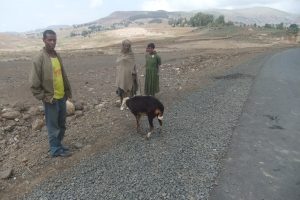Many developing countries face a youth employment challenge. One aspect of this challenge is to ensure that young women have equal access to work, especially within the growing non-farm economy. "Their participation is in many contexts constrained by social norms" stated Eva-Maria Egger from UNU-WIDER during her presentation titled "Does connectivity reduce gender gaps in non-farm employment? Evidence from 12 low- and middle-income countries" on February 20, 2020 at IFPRI-ESSP. The finding of the study reveals that the population density of a location where young people live significantly contributes to a reduction in the gender gap, while travel time has no influence. However, the gender gap persists for married young women independent of connectivity improvements. These women face a disadvantage compared to both their male and their unmarried counterparts. Social norms around women’s role in a marriage and household significantly constrain their labor force and off-farm participation and infrastructure improvements alone might not change that.
A second presentation titled "Unpacking The Depth Of Informality in Six African Countries" by Cecilia Poggi (AFD) discussed the relationship between poverty and the depth of informality, measured at household level and through different definitions. The study shows how this relationship differs from the often used binary informality variable for the household head. Household depth of informality is defined as the share of informal activities (like hours worked or income earned). Formality is defined through either social protection access (health insurance or pension) or broadly including contract status. The analysis reveals that there exists a non-linear relationship between the depth of informality at the household level and welfare outcomes. In some countries, a small share of income earned from a formal job is associated with better welfare outcomes than that of fully informal households or that of a household with a formally employed household head. The results are dominated by the urban population. The analysis confirms that social protection programs have to account for both different profiles of informality within the population and between geographies to formulate effective targeting and roll-out of more sustainable strategies.
